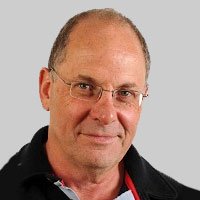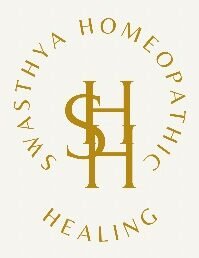 Though Dinesh and I have only met a few times, we have become good friends through common purpose and love of homoeopathy. I have attended his online course ‘Thus spoke the plants’ from which I have learnt much and enjoyed. The concept of right and left brain in relation to homoeopathy is one that has spread in our profession’s consciousness over the last years. These represent two types of thinking: precise data versus free associative thinking, linear versus circular, informative versus conceptual, hard work versus institutive leaps. Logic versus Magic. Sense versus Non-sense. Two approaches to solving cases.
Though Dinesh and I have only met a few times, we have become good friends through common purpose and love of homoeopathy. I have attended his online course ‘Thus spoke the plants’ from which I have learnt much and enjoyed. The concept of right and left brain in relation to homoeopathy is one that has spread in our profession’s consciousness over the last years. These represent two types of thinking: precise data versus free associative thinking, linear versus circular, informative versus conceptual, hard work versus institutive leaps. Logic versus Magic. Sense versus Non-sense. Two approaches to solving cases.
Combining this two-sided approach involves both sides of our being-brain and is called synthesis.
However, there is more to it than that. When we are prescribing for a patient, the idea is to restore the two sides of their being into one, to engender harmony between Yin and Yang, between our female and male aspects. This marriage is what we term holistic healing, and its result is personal and world harmony.
The techniques we use for finding an appropriate remedy for our patient must reflect this goal. We compare and contrast general and common symptoms with the Strange Rare and Peculiars (SRP). The first group represents logical left brain thinking. Appetite, temperature reaction, numbness, forsaken feeling, are all deviations from a logical norm. They can be explained, investigated, and understood. On the other hand, the SRP symptoms cannot be defined, they are not subject to the strangulated laws of logic. We cannot understand the reason someone wakes at precisely 2.33 every morning, why a patient has dreams of aliens on planet Zog, or why they desire sardines in apricots. Interestingly Hahnemann states that the only way to find the remedy is via logical totality (Paragraph 7), and then seemingly contradicts himself by stating that the sole way to find a remedy is though SRP (Par 153). This is no contradiction. Both sets of symptoms must be used in harmony. It is through the marriage of these two paragraphs, by combining different types of symptoms and thinking, that we can find a remedy which will re-unite both sides of our patient’s being.
But let’s take it a step further, to the sequence of flow of these two types of expression. In nature, Strange Rare and Peculiar always come first. Say we are thrown onto planet Earth at the age 23.3, having just arrived from planet Zog. We wake upon the first day and see a sun in the sky. Only one sun?! How strange. On Zog there were 23 suns, and I was only 2.3 years old. Hmmm… and this 24 hour cycle? Unique! Zog was 33.2 hours. And what about those primitive mobile phones people use all over. At home we communicated through carrot-based telepathy. And what about my new craving for sardines in apricots?
Ten earth years later, all is explained and understood. No telepathic carrots here, so people need primitive machines. And this solar system only has one sun, which is 8.3 light minutes away, so of course it’s a 24 hour cycle. All becomes clear in the daylight of reason and knowledge.
Likewise, we may find, after much scientific explorations, that sardines and apricots contain the exact match of vitamins and minerals that we are missing from Zog. Oh, and those dreams… of course.
So, we see that knowledge flows from the Magical to the Logical. As I have seen in Africa, if we bring an i-Pad to a so-called primitive tribe it will seem like magic, but after a short while it becomes the norm. Like homoeopathy, the magic of today is the science of tomorrow.
But contrary to this, working on patients demands the opposite direction of flow in 98% of cases, the reverse order of time. We start with a logical and common totality, building a Boennighausen like repertorization of general symptoms. In this way we know that all the remedies which come up will match the general idea of the case and can therefore help to some extent. Only then do we narrow our search down, seeking a more precise match by using the SRP. When baking a cake, first comes the base of eggs, sugar, flour, milk, chocolate, and only then the icing with the unique message ‘Come home, all is forgiven, bring the lottery ticket.’ This is the sequence that should be the direction of study in homoeopathy.
Working in the other direction, beginning the case with a strange symptom before the logical totality, works in a small percent of cases only, and will mostly lead us astray. This is why it is called keynote prescribing – a SRP without a solid base to stand on.
And so, we come to Dinesh and his spectacular right brain methodology, the subject of this book. Dinesh plays a magical game with patient and plant, extracting information from stories, myths, dreams, spontaneity, analogy and mythology, adding a fifth dimension to a two-dimensional case. This is truly wonderful.
But make no mistake. Magic is a high level and a dangerous game. Dinesh can afford to play this game safely only because he has a tremendous grounding in the logical world of homoeopathic principles, Materia medica and patients. He has the knowledge and firm footing that enable him to fly high. And this comes through a tremendous amount of hard work and experience. His plant work clearly demonstrates this, first understanding chemistry, biology, family and genus before he takes-off into the mysteries of unknown analogies.
Intuition means tuition from within. To develop it we need to work hard, gaining knowledge and experience which over time becomes our own. Without this, intuition is demolition.
Try to fly before you have a solid foundation, and in my humble opinion your broomstick will fall straight into a Hogwarts bowl of soup, as I see all too often in the fledgling homoeopaths that attempt to soar before they can crawl. #Sequence matters.
Hence, I perceive this book as an advanced one, written for those who have walked the talk in a proper way, who have succussed themselves with due diligence and are now ready to dilute into a higher potency of homoeopathy, into the magical world of non-sense. Non-sense is the realm of children’s play, and hence it is advanced, and Dinesh leads us confidently through the keyhole and beyond the looking glass in search of the hidden clues needed to restore our patient’s health.
